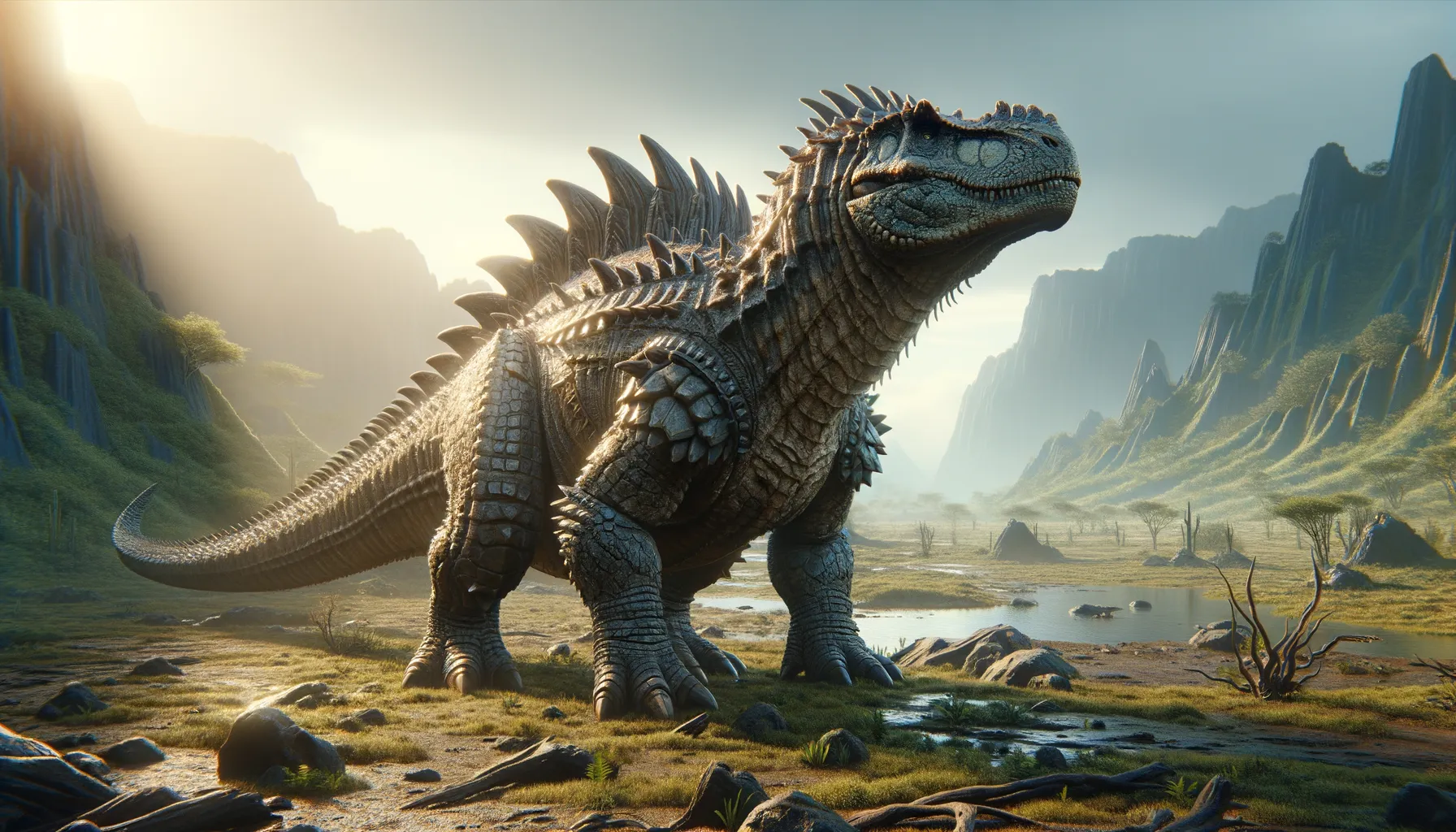
Peloroplites
Armored giant of the ancient Cretaceous world.
Period
Cretaceous
Length
About 16 to 20 feet long from head to tail.
Height
Approximately 8 feet tall at the shoulder.
Weight
Around 5 tonnes, similar to a large elephant.
Peloroplites was a large, armoured dinosaur known for its impressive body armor, resembling that of a medieval knight. It belonged to the group Ankylosauria, characterized by its heavily fortified body and club-like tail, which it used for defence. This herbivorous dinosaur roamed the ancient landscapes during the Early Cretaceous period, approximately 110 million years ago. Its fossils provide a glimpse into a world dominated by these magnificent armored giants.
Diet
Peloroplites was a herbivore, feeding primarily on low-lying vegetation. Its diet likely consisted of ferns, cycads, and other prehistoric plants that it could easily reach on the ground. With a well-adapted snout, it could efficiently graze on a variety of plant materials.
Hunting
Being herbivorous, Peloroplites did not hunt for prey. Instead, it may have used its keen sense of smell to locate patches of vegetation. It relied more on its armor and clubbed tail for defence against predators rather than any hunting behavior.
Environmental challenges
Peloroplites faced several challenges in its environment, such as fluctuating climates during the Cretaceous period, which could affect the availability of food. Predators like theropod dinosaurs were a constant threat, requiring Peloroplites to depend on its natural armor. Seasonal variations might have influenced the types of vegetation available for its diet, necessitating flexible feeding habits.
Speed
Slow, likely walked at a leisurely pace.
Lifespan
Estimated to live around 20 to 30 years.
First discovery
Discovered in 2004 by a paleontologist team in Utah.
Fun Facts
- Peloroplites was a herbivorous dinosaur that lived during the Early Cretaceous period, about 110 million years ago.
- Its name means 'monstrous heavy one,' reflecting its considerable size and weight.
- Peloroplites belonged to a group of dinosaurs known as nodosaurids, which were armored dinosaurs related to Ankylosaurs.
- This dinosaur was discovered in what is now Utah, USA, in the Cedar Mountain Formation.
- Peloroplites had a robust body covered with bony plates and spines for protection against predators.
- Despite its heavy armor, Peloroplites was not a slow dinosaur; it could move at a decent speed, making it harder for predators to catch.
- The fossils of Peloroplites suggest it could grow up to 16 to 20 feet long, making it one of the larger members of its family.
Growth and Development
Peloroplites likely experienced steady growth throughout its life, reaching full size within a few decades. The development of its armor was crucial for survival, providing protection against predators as it matured. Juveniles may have been more vulnerable due to less developed armor, requiring safer environments or the protection of a group.
Habitat
Peloroplites inhabited environments that were generally rich in vegetation, such as floodplains or forested areas. It likely preferred regions with abundant plant life to support its herbivorous diet. Seasonal changes in water availability and food resources may have influenced its movement patterns. Its habitat supported a diverse range of plant and animal species, contributing to a rich ecosystem.
Interaction with other species
Peloroplites, like many herbivores, may have lived in groups to increase protection from predators. Its interaction with predators was mainly defensive, using its clubbed tail and armoured body. Coexisting with other herbivorous dinosaurs, it shared resources without significant competition due to varied feeding habits.
Natural lifespan
Peloroplites could live for up to 30 years under natural conditions.
Reproduction
Peloroplites likely reproduced by laying eggs, as with other dinosaurs. Nests would have been constructed in safe, hidden areas to protect eggs from predators. Parental care is uncertain, but young Peloroplites may have had some degree of protection until their armor developed. This reproductive strategy ensured the survival of offspring in a challenging environment.
Social behaviour
Peloroplites might have exhibited some level of social behavior, potentially living in herds for protection. This social structure would have provided better defence against predators, as there is safety in numbers. Communication among individuals could involve visual displays or vocalizations, enhancing group cohesion.
Fossil locations
Fossils of Peloroplites have primarily been found in the Cedar Mountain Formation, Utah. These discoveries provide significant insight into the types of habitats and conditions this dinosaur experienced. The well-preserved remains help scientists understand its physical characteristics and lifestyle. Continual fossil discoveries in these areas contribute to the broader understanding of Cretaceous ecosystems.
